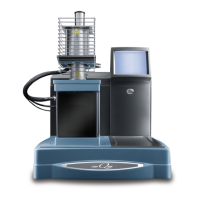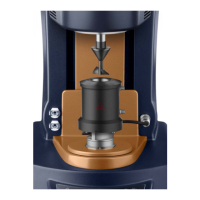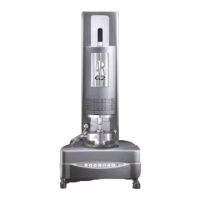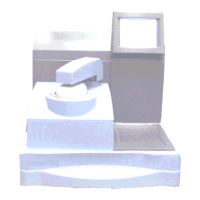Appendix B
B–20 TA I
NSTRUMENTS
TGA 2950
nitrogen will separate in air due to reaction with
oxygen in the purge stream. Switching from air
to nitrogen may help to eliminate oxidation
which tends to counteract a simultaneous weight
loss. A few materials are reactive with nitrogen
and are better run in argon. Also, consider the
purity and moisture content of the purge gas.
Adding or removing moisture may change the
rate or nature of the reactions taking place.
When the nature of the sample is relatively
unknown, it is wise to repeat scans using both
air and nitrogen to see if any transitions appear
or disappear, or shift in temperature or weight
loss.
Another test is to determine if the components
of the sample material have significantly differ-
ent rates of decomposition. If so, it may be
possible to improve resolution using stepwise
isothermal heating, or using the constant reac-
tion rate Hi-Res
TM
mode (negative resolution
settings). To find out, run a conventional
constant heating rate ramp up to the transition
temperature and then hold isothermally. After
the decomposition is complete, plot the deriva-
tive of weight percent versus time and look at
the shape of the curve. If both components of
the transition are decomposing at about the same
rate, then the curve will be a continuous expo-
nential decay. However, if the curve appears to
be a rather rapid exponential decay, followed by
a very gradual and somewhat constant rate of
weight change, then the components have
different reaction rates and improvement in
separation is probably achievable.

